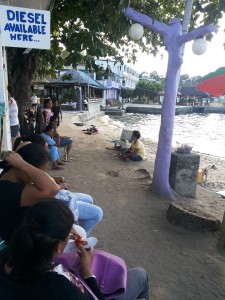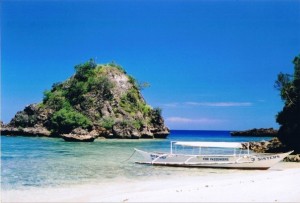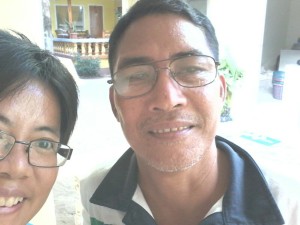
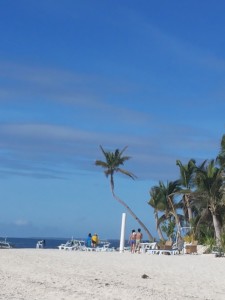
On the surface, Malapascua Island, Cebu is paradise. Bounty Beach, or what once was known as the island’s “secret beach,” is an endless strip of fine white sand and coconut trees. The waters are crystalline and inviting. Most of the time, the beach is empty and you feel like you’re in a perfect world all your own.
Its rise as a prime diving destination is not surprising. After all, Monad Shoal and Kemod Shoal, top dive spots for pelagic sightings, are within an hour away. Monad Shoal is specially popular because it is the only place in the world where you are guaranteed a dive with thresher sharks. Since more than a decade ago, divers from all over are packing their bags for the long trip north of Cebu. Two- to three- star resorts now line Bounty Beach to service diver traffic.
Tourism has become the primary source of income of Barangay Logon, the official/administrative name of this paradise island. But it is a double-edged sword that the community – locals, resort owners and dive operators – still struggle with.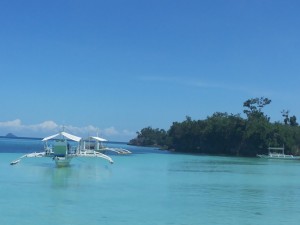
The island’s booming dive industry is an environmental compromise. Unsustainable diving practices have worsened the state of the marine habitats that Malapascua has become known for. Diverting locals from the illegal practice of dynamite fishing has not stopped outsiders from encroaching on its waters and compromising reefs and the treasured thresher sharks of Monad Shoal. Add to that, the island is still reeling from blows dealt by super typhoon Haiyan/ Yolanda. Balance has yet to be achieved, and it looks like the community has to do it on its own, with little municipal support.
Monad Shoal and the Threshers
Monad Shoal is a relatively shallow seamount, around 8 kilometers from Malapascua Island. It is where you go to see thresher sharks, solitary pelagics known for their elongated tail, which they use to stun prey. They come to Monad Shoal to get cleaned by cleaner and moon wrasses.
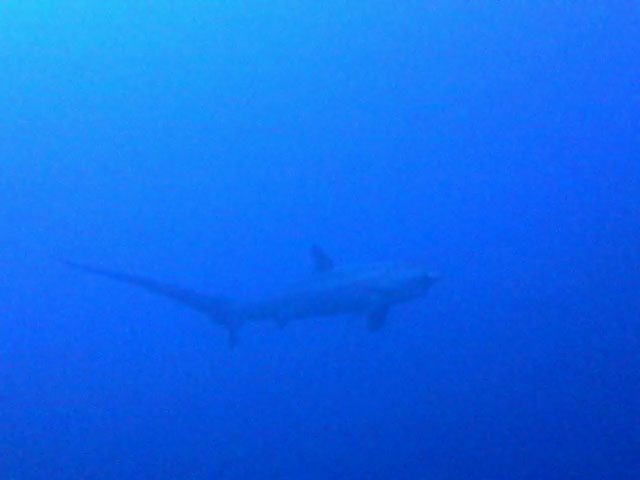
The Thresher Shark Research and Conservation Project (TSRCP) was established to study this phenomenon. Before TSRCP, there was little data on thresher shark behavior and the impacts of over-fishing and unsustainable dive practices on Monad Shoal. The group’s efforts have increased public awareness about these sharks and have helped boost the popularity of Malapascua as a dive destination.
However, this has had little effect on illegal dynamite fishing and the hunting of thresher sharks. Thresher sharks are classified as vulnerable to extinction by the International Union for the Conservation of Nature and Natural Resources (IUCN press release 2007). But so far, through initiatives of TSRCP and other conservation groups, only the government of Batangas has passed legislation that protects these sharks. Thresher sharks are still openly sold in the markets of Daanbantayan, Cebu – where Logon falls under – and nearby areas.
As early as 2002, a study by Baum et.al. already noted the 80% depletion of the global thresher shark population. This was in the span of 15 years. It makes you wonder where things are now and why these sharks are still unprotected…. even just in Daanbantayan, at the very least, where municipal tax income increases vis-a-vis the health of Monad Shoal sharks.
Haiyan and After
Malapascua wasn’t spared by Haiyan/ Yolanda last November 2013. Like its neighbor Tacloban, Leyte, the super storm completely flattened the island. Luckily, there was no human casualty. They only had a lot of rebuilding to do.
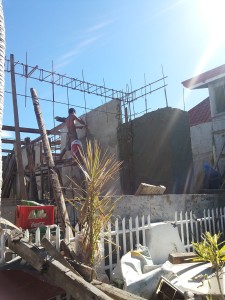
5 months after and it looks like all’s in place. The tourism infrastructure is back up. Many private homes within the barrio, mostly single-story wooden structures, have been rebuilt. Fallen trees have either been gathered or cut up to line roads.
David Joyce, co-owner and manager of Craic House/ Evolution Diving, said that the recovery of Malapascua owed a lot to travelers who never forgot about the island. When little sustained help came from government/non-government organizations, resort owners reached out to old guests. Donations came pouring in and there was enough to dole out to the rest of the community. A foundation was established to manage funds, provide for families who want to rebuild their homes and implement a better sewerage system throughout the island.
In a way, Haiyan was a reboot that can help Malapascua steer clear from the typical pitfalls of paradise islands, as in the cases of Boracay and Puerto Galera. There is (finally) cooperation among resort owners and dive operators, and the local community. Plus, a better way of managing wastewater throughout the island has been implemented.
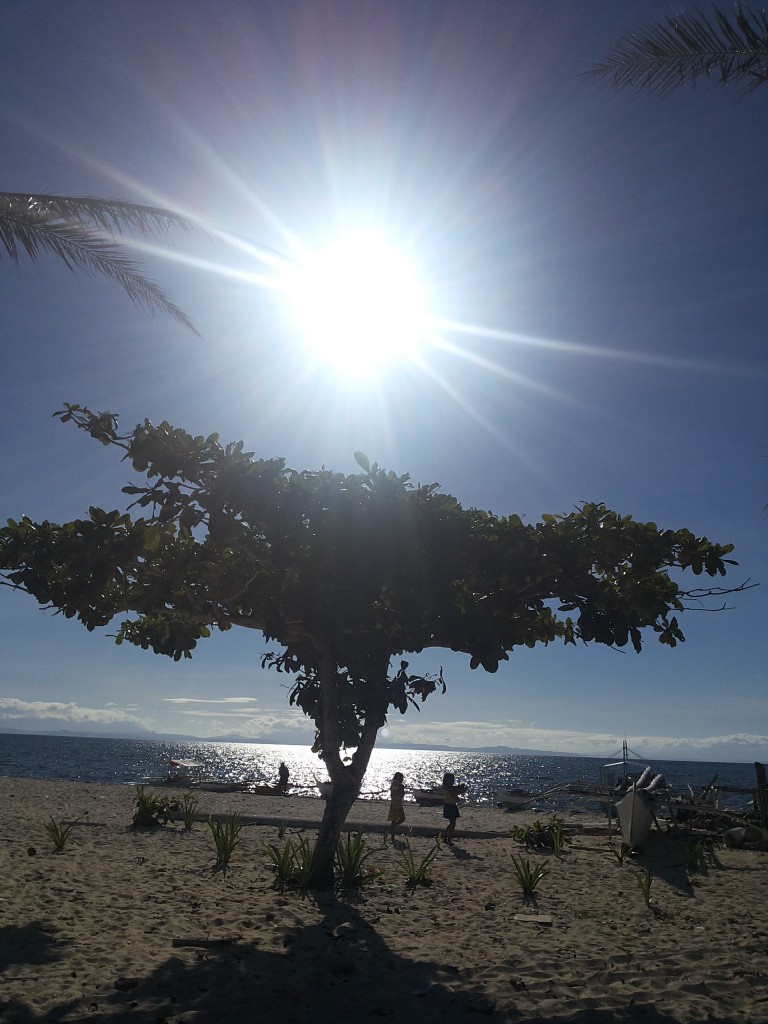
David likened Malapascua’s recovery to the talisay tree. He noted how the talisay seemed to just sprout up, in full glory, a month after Haiyan/ Yolanda struck it down. He hoped it could be the same for the island. He said he felt hopeful when travelers began to return just two months after the storm.
But then again, the talisay is not a narra. When asked if Malapascua is now Haiyan-proof, David said no. Another big one can strike down the island – and this big one might not even be a storm authored by nature.
Politics of Paradise
Malapascua’s tourism industry is dependent on two things: the weather and the sharks. While you can’t really control how horrendous climate becomes in the next decade, there is a way to protect the sharks.
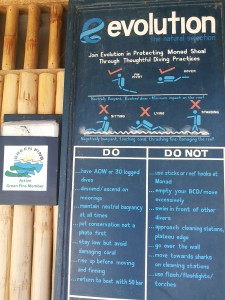
And it does boil down to political will. The dive centers have adopted better diving practices, especially in Monad Shoal. The locals have veered away from destructive fishing practices – many now work for the resorts. And TSRCP is doing good work in disseminating information and making people care about thresher sharks.
But if political will bends to boodles and what-not, if it continues to display apathy toward the state of marine resources, then the tourism industry that currently supports Barangay Logon will collapse. Paradise disappears. As David said, “It has to start with protecting the thresher sharks of Monad Shoal.”
Everything else – the imaginings of paradise that Malapascua offers – follows.
Sources:
The Thresher Shark Research and Conservation Project, http://www.threshersharkproject.org/.
David Joyce (Interview, April 25, 2014).
Sharks for sale: Hammerheads, thresher sharks still hunted in Daanbantayan for fins, meat. Cebu Daily News, http://cebudailynews.inquirer.net/2014/04/30/sharks-for-sale-hammerheads-thresher-sharks-still-hunted-in-daanbantayan-for-fins-meat/.







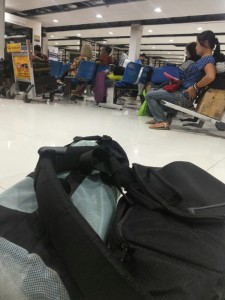
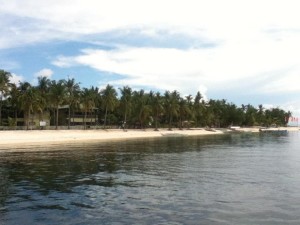
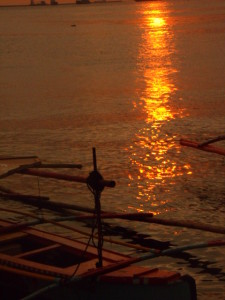 To be honest, I’ve felt iffy after the 1st leg. I say iffy because I can’t think of the best word for it… so iffy.
To be honest, I’ve felt iffy after the 1st leg. I say iffy because I can’t think of the best word for it… so iffy.
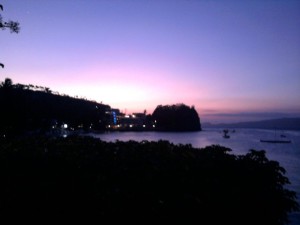 The similarities between Puerto Galera and Boracay are not limited to aesthetics and the sun/sand/sea gratification they offer. The rise of these prime Philippine tourist destinations is practically the same, with Puerto Galera at the heels of Boracay. Both are paradise discovered, developed and overdeveloped, at the cost of the environment and the local communities – what made these places paradisial in the first place.
The similarities between Puerto Galera and Boracay are not limited to aesthetics and the sun/sand/sea gratification they offer. The rise of these prime Philippine tourist destinations is practically the same, with Puerto Galera at the heels of Boracay. Both are paradise discovered, developed and overdeveloped, at the cost of the environment and the local communities – what made these places paradisial in the first place.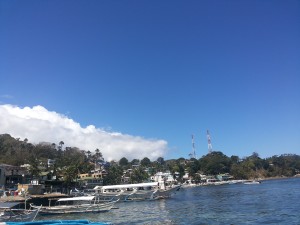 Things are bound to change when climate changed. Like many marine hotspots, today’s freakish climate affects Boracay and Puerto Galera. The rising water temperature causes corals to bleach, and affects other lifeforms, such as krill. This then results in an imbalance, and changes coral reef landscapes. It also creates monster storms; one of which was Bagyong Caloy (international name: Typhoon Chanthu) in 2010. Caloy destroyed the coral reefs of the Sabang, Puerto Galera beaches: Sabang, Small La Laguna, and Big La Laguna. These were some of the major draws of the area – a reason why countless dive shops do business along Sabang’s beaches.
Things are bound to change when climate changed. Like many marine hotspots, today’s freakish climate affects Boracay and Puerto Galera. The rising water temperature causes corals to bleach, and affects other lifeforms, such as krill. This then results in an imbalance, and changes coral reef landscapes. It also creates monster storms; one of which was Bagyong Caloy (international name: Typhoon Chanthu) in 2010. Caloy destroyed the coral reefs of the Sabang, Puerto Galera beaches: Sabang, Small La Laguna, and Big La Laguna. These were some of the major draws of the area – a reason why countless dive shops do business along Sabang’s beaches.